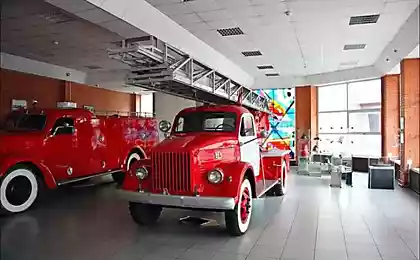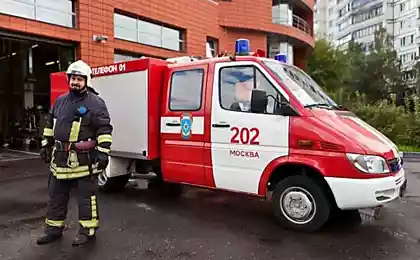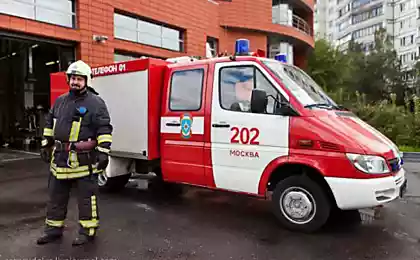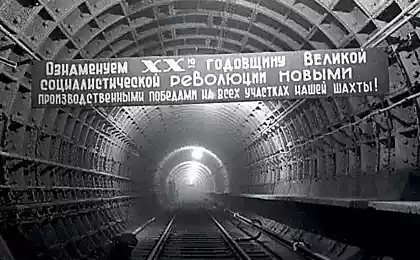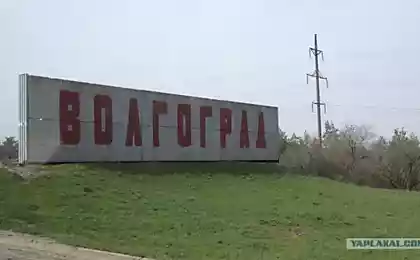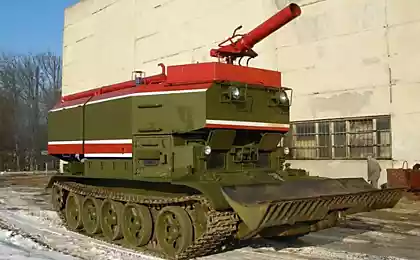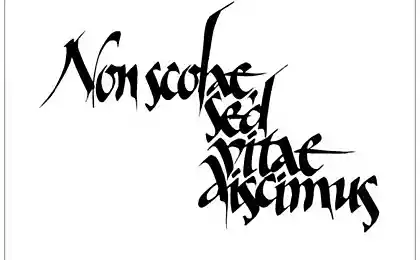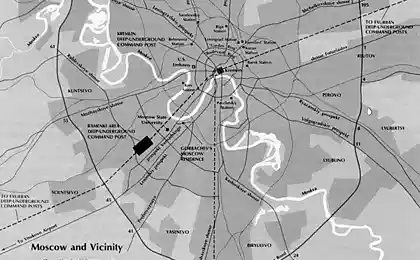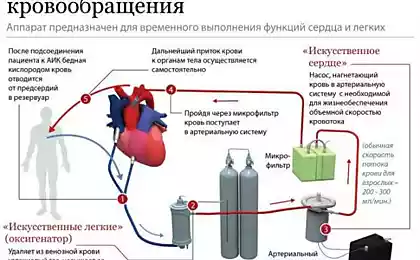964
How does the fire department of the Moscow JI
Writes Sergey Dolya
After visiting the American firehouse I became very interested, and how things are with us. I received an invitation from Ilya Boyko visit one of the fire-rescue teams (JI), the Moscow Fire and Rescue Center (GU "PCC") - PSO-202. What can I say ... I was impressed to see I am not what I expected: building brand new, first-class equipment, including thermal imagers, even, sociable, cheerful fire. And when I asked one of them about the salary, he said: "We have a normal salary. More than the average for Russia. " Rarely is meet ...
51 photos
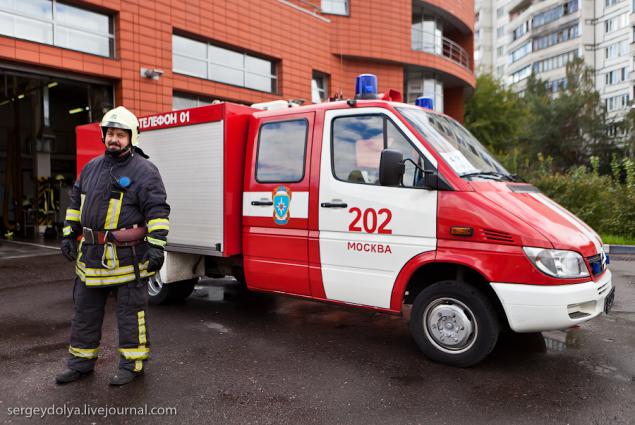
To begin with, the whole building looks like a botanical garden. The detachment was lucky with the commandant. Thanks to the staircase and the rooms are literally surrounded by greenery:
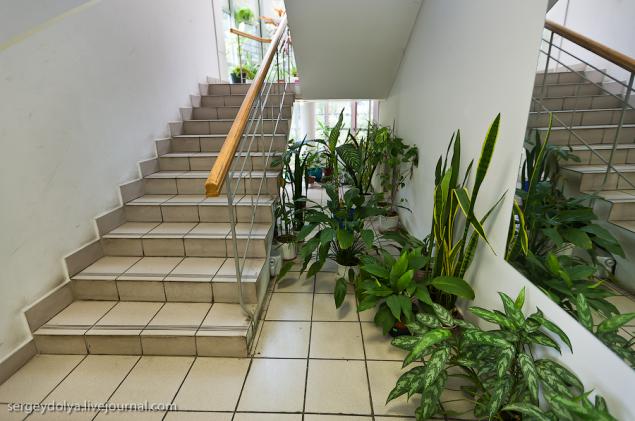
Most of the day, if there is no call, firefighters carried out in the classroom or in the gym:
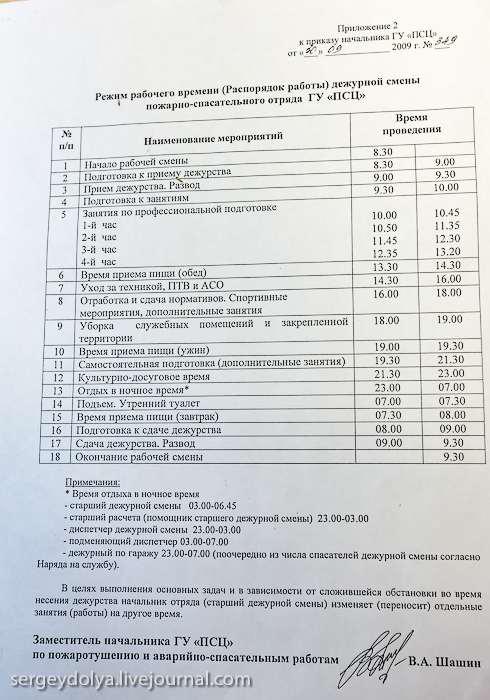
04
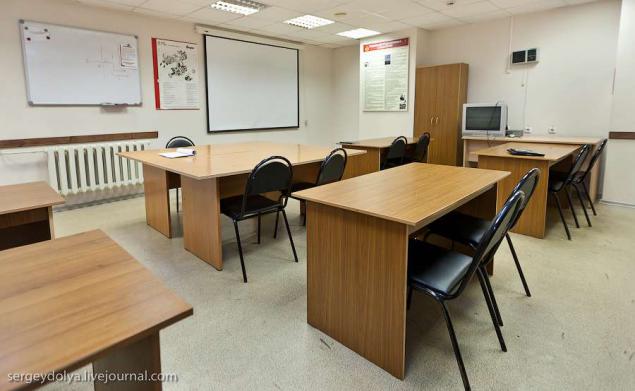
Learn the 19 items. From 4 to 6 pm rent regulations. Several times a year pass tests in all disciplines:
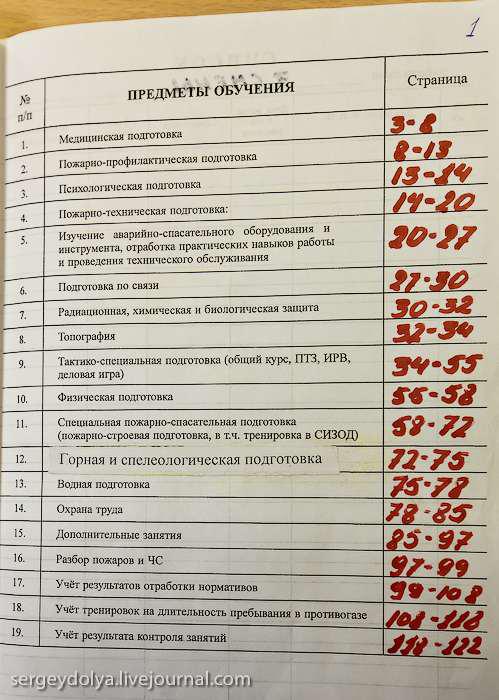
One of the standards - is to climb to the fourth floor of the training fire tower (the height of a 4-storey building) with the hook ladder. Standard (it's C grade!) 26 seconds, and best time to take - note - 10 seconds!
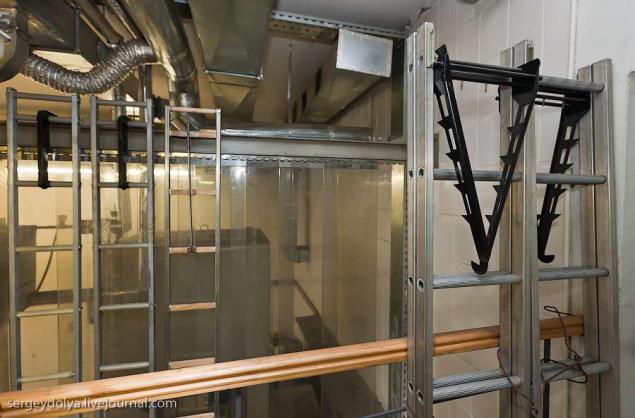
In the basement, in a separate room, there is a gym and a rocking chair:
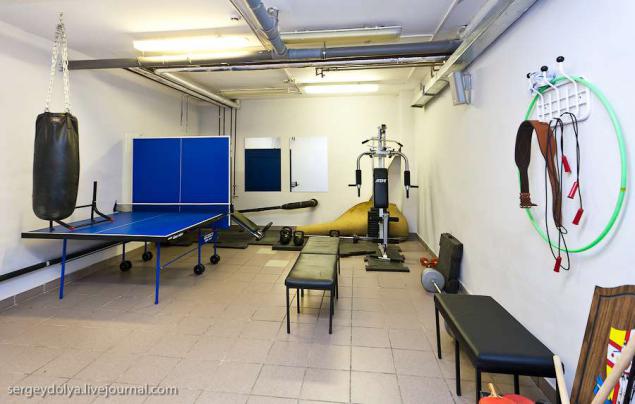
One day, on average, firefighters go 3-5 times, as recorded in the journal:
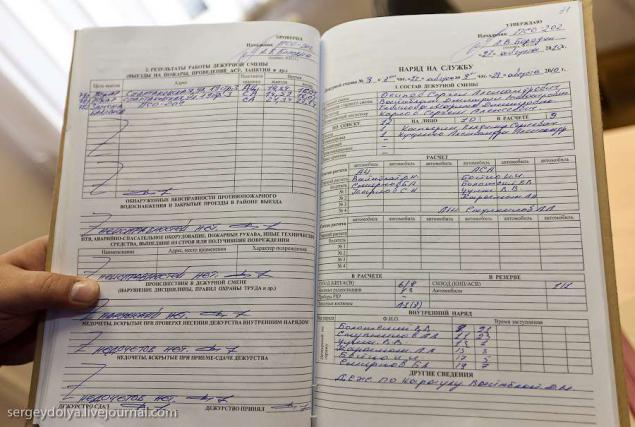
As part of the Burning Bush is hanging icon - patron of firefighters:
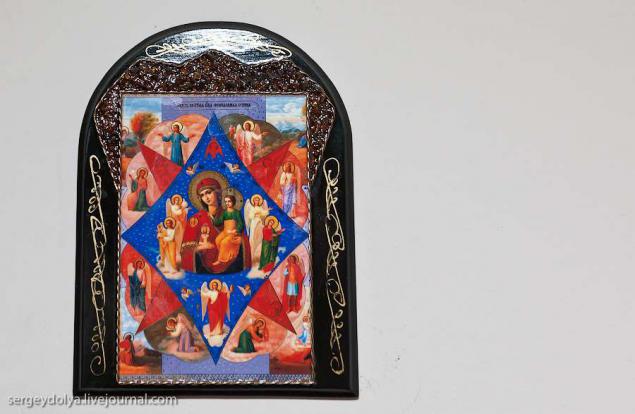
Prepare yourself for yourself in the kitchen:
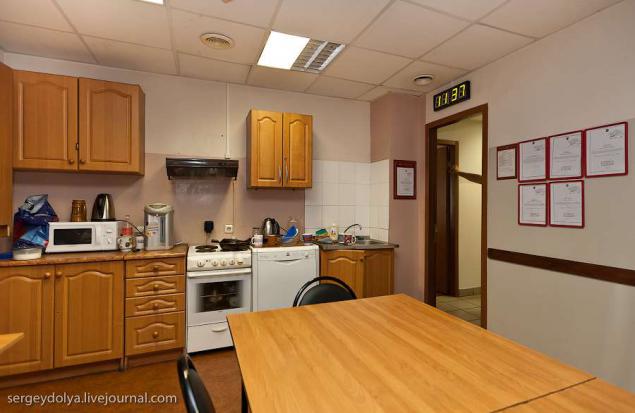
11

After dinner, if you have some spare time, you can porelaksirovat front of the TV:
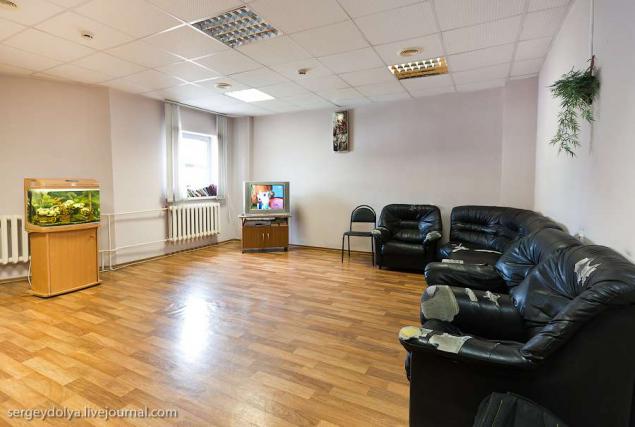
They sleep all the conditioned space. This is especially true was during peat fires and smog. Duty hours in 4 days:
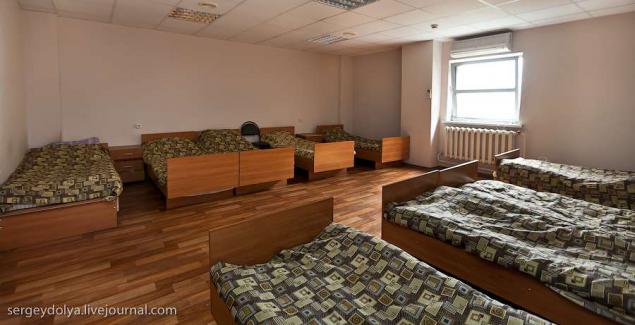
As part of a special drying cabinet, which completely dries boevka (jacket fire) for 15 minutes!
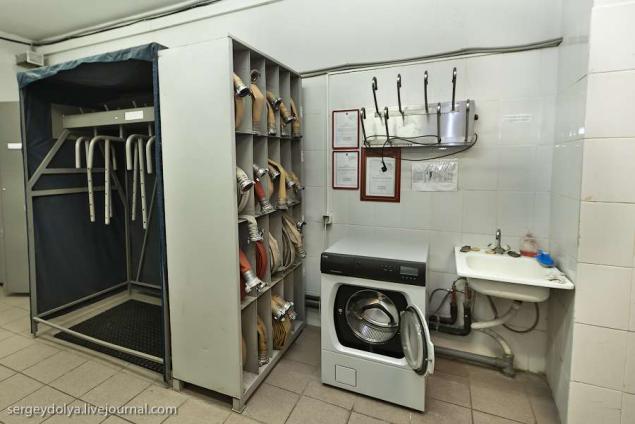
During the Moscow smog wrote about fire hoses and about what types they are. Types much, but there are two common diameter - "A" - 77 mm. and "B" - 51 mm. To distinguish the type A of type B was quite simple: A hole sleeve breaks 3 fingers, and arm B of 2:
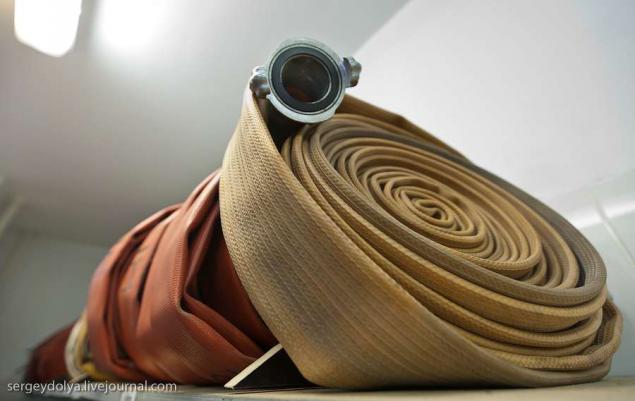
Despite the fact that the watch tower had long been used by firefighters to oversee the city, it is still being built in every fire department - it dried fire hoses. They hang on the bars and lift up using a special mechanism:
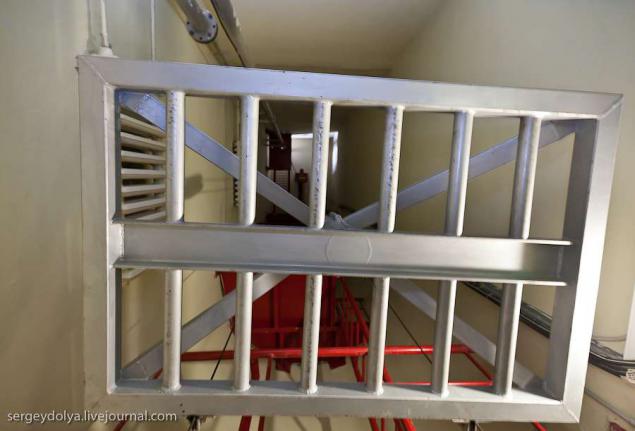
This office operational duty around the fire rescue center. They supervise the work of teams and go on all the big scene, if necessary, to guide the work of their departments:
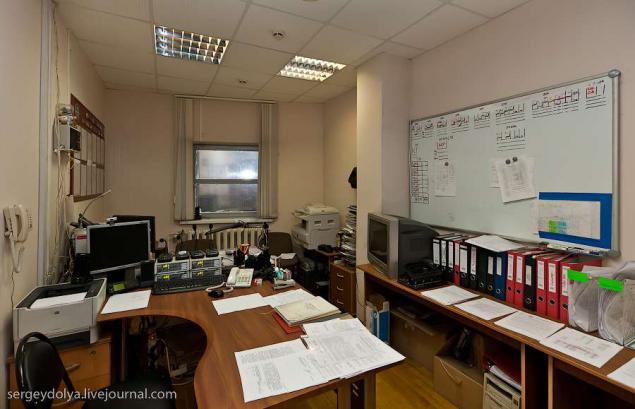
On the board in the operational duty machines marked all fire and rescue team, and he sees where they are at any given time:
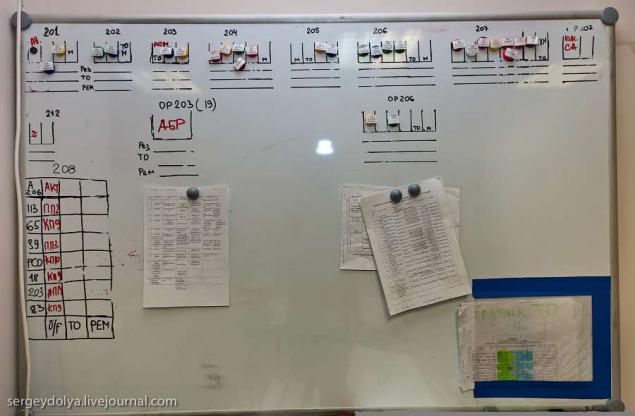
In general, in Moscow, more than a hundred fire departments. All of them are marked on this map:
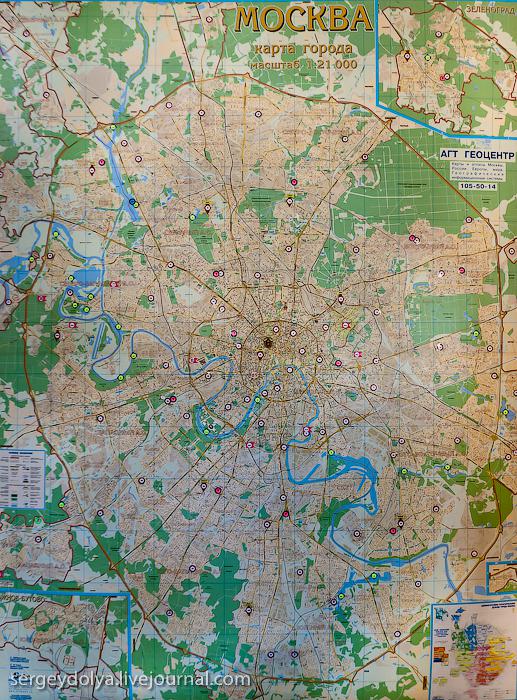
Call the fire takes the NCC - the Force Control Center, and then forwards it to the nearest fire station, where it takes the controller:
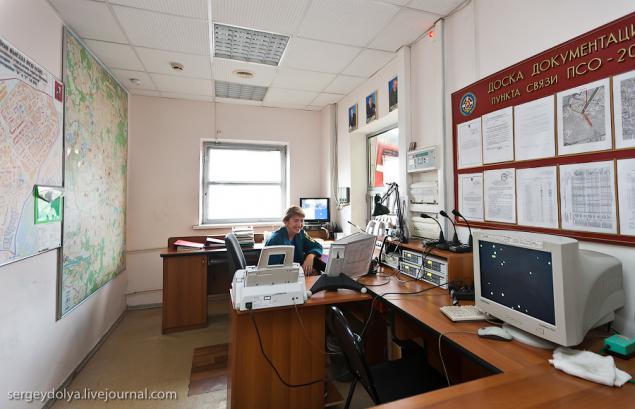
21
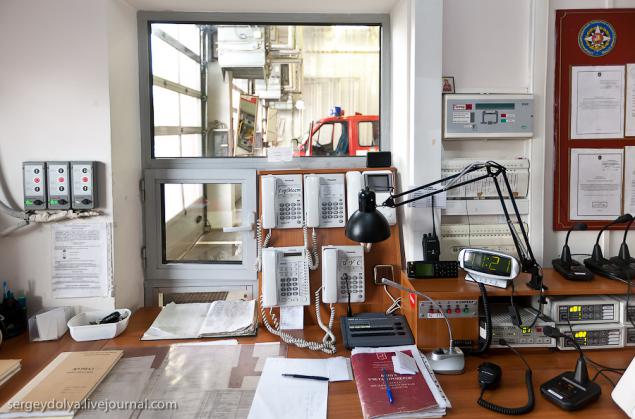
During a call, for all speed down from the second floor of the special poles. As explained to me, the main thing - do not cross your legs, and then you can easily break them:
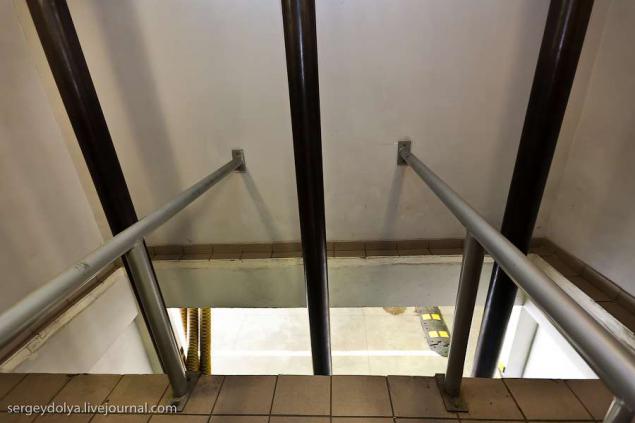
23
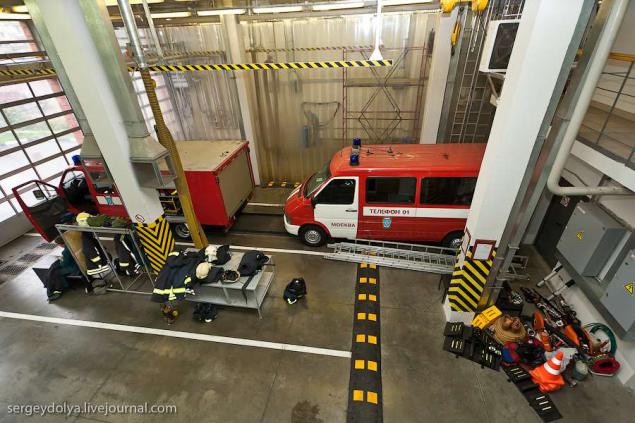
Wear protective clothing, and already at the bottom very quickly. Boots are ready with his pants down:
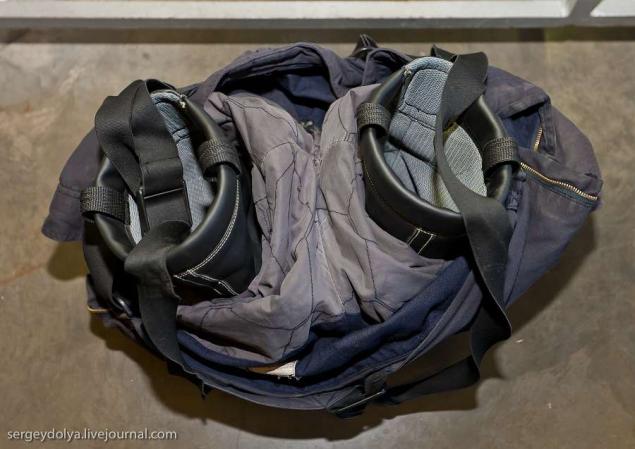
A boevka put over his head
Already on the run or in the car wearing a helmet and a belt with an ax. Incidentally, the average time rescuers Directions in Moscow - 7, 5 minutes:
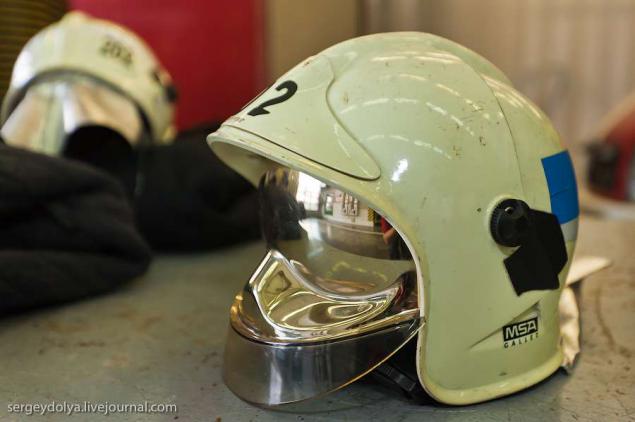
Rescuers are two types of breathing apparatus - "vents" and "kislorodniki." First Drager PSS-90 - open circuit devices. Air for breathing is taken from the cylinder. Such a device is lightweight, but is designed for a short time (about an hour):
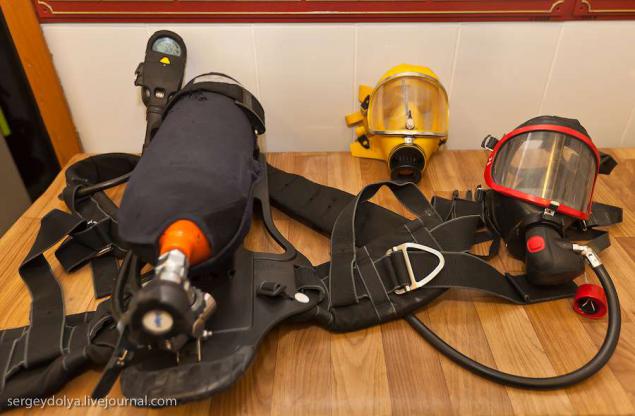
The air supply is controlled by a computer:
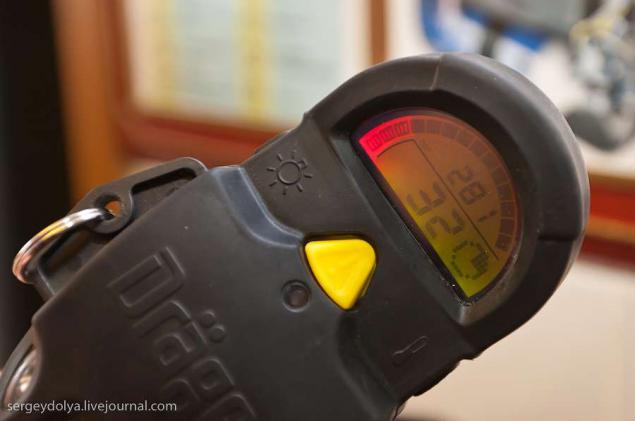
Exhaled air into the center hole, and he served on the perimeter at a slight pressure, blowing glass mask and preventing it from fogged:
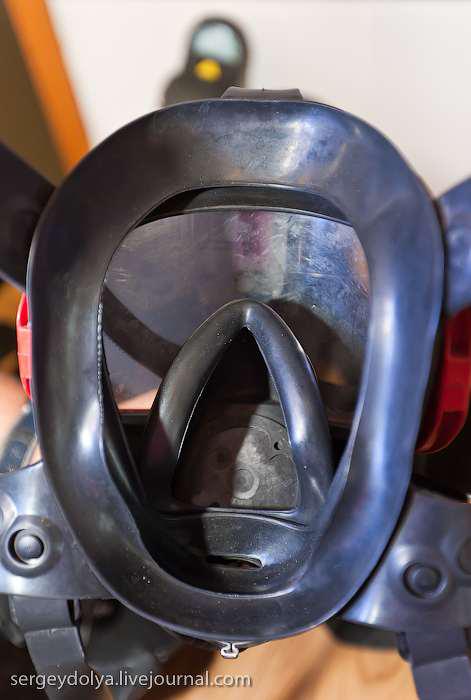
"Kislorodnik» Drager BG-4 - the device closed loop. It exhaled air passes through a special filter, then a little saturated with pure oxygen from a small bottle and returns to you. BG-4 allows you to breathe normally for up to 4 hours:
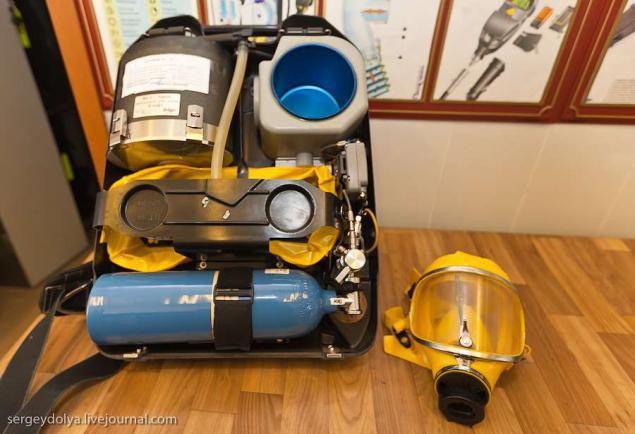
The air here is not served by the glass, and the mask may steam up. To combat this, there is an indoor janitor with a manual drive:
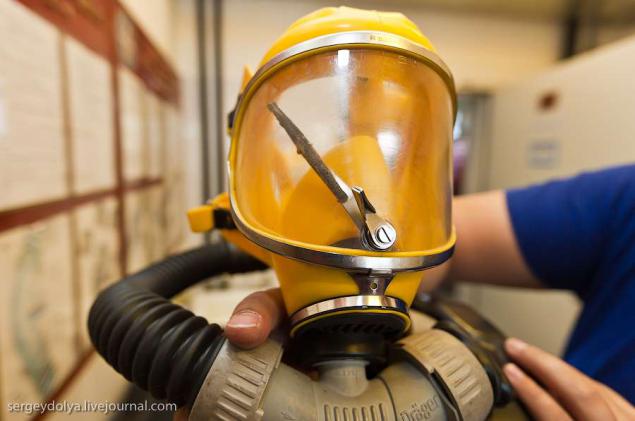
The equipment of each lifeguard PSO-202 Portable Kit includes necessarily self-rescue rescuers, popularly referred to as "samosёb." It is a subtle but strong 20-meter rope on which the rescuer can descend from the window, if the flame cut its output by:
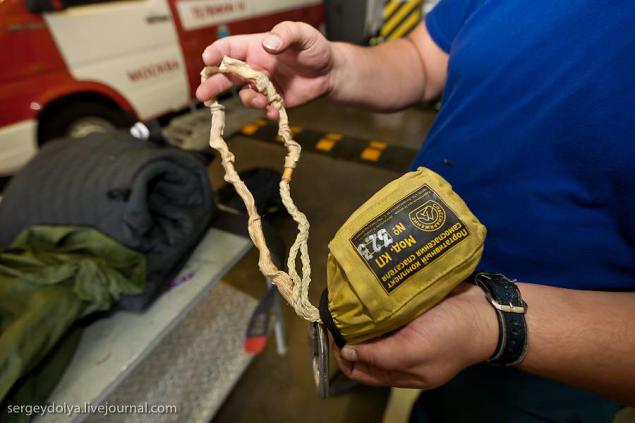
At my request, emergency vehicle (ASA) was kicked out and told what he is equipped with:
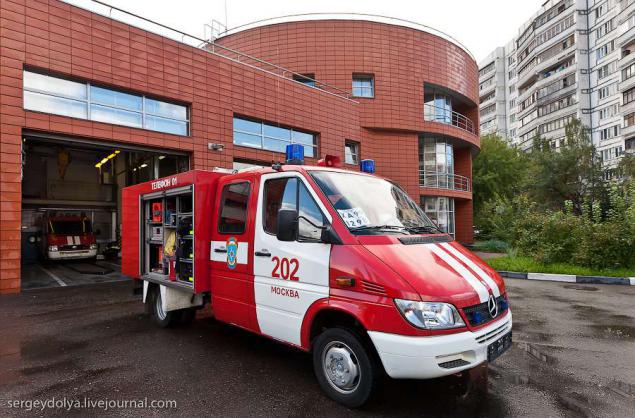
To the right are three sets of the respiratory system PSS BG 4 (each rescuer - a machine), in the blue box is a tool for opening the entrance door, in the orange box - control panels high pressure pneumatic jacks. The yellow cover - low pressure pneumatic cushions. Next to them in depth - a suitcase with an electric punch.
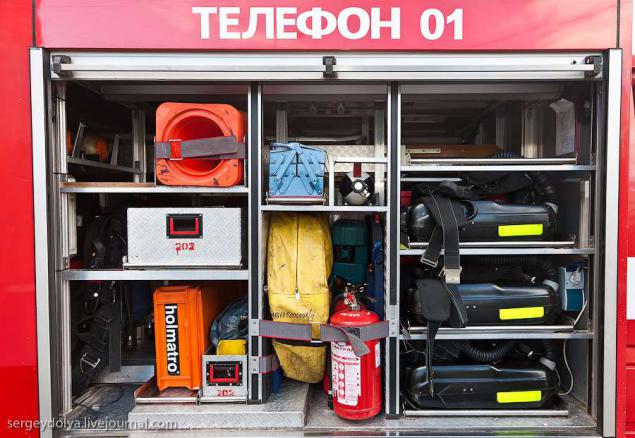
The metal box is based on different ropes, and a little higher - traffic cones:
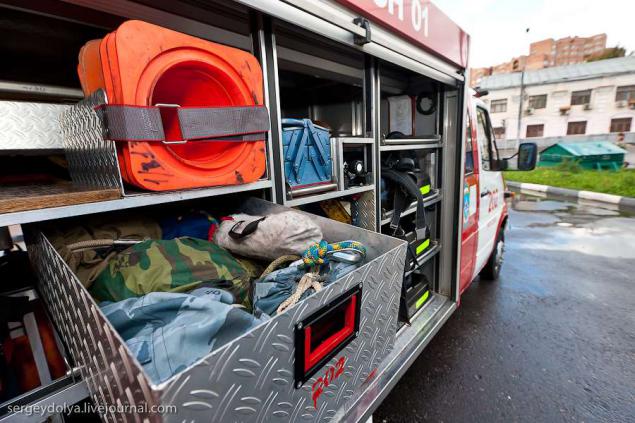
Easy breathing apparatus PSS-90 mounted on the rear rail to travel:
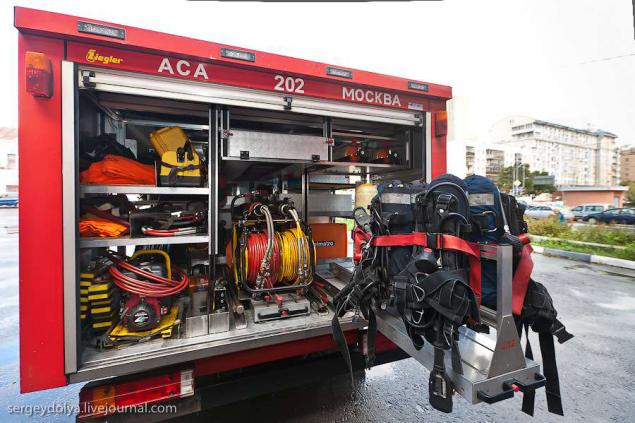
Nearby, on the same rails, leaves the unit with a hydraulic tool:
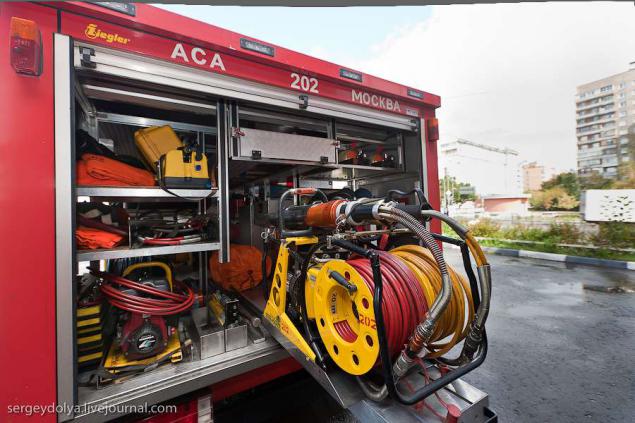
37
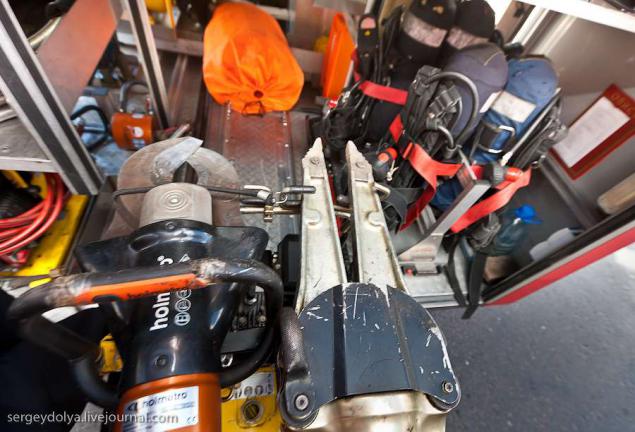
38
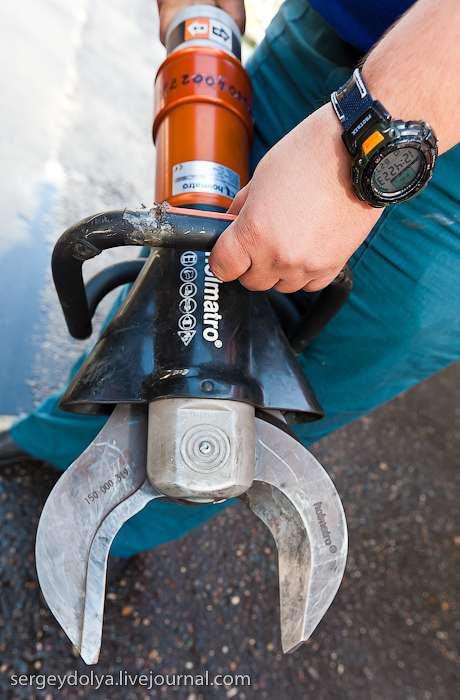
The orange bag is suit for the rescue of victims in cold water. Something like a wetsuit, but insulated:
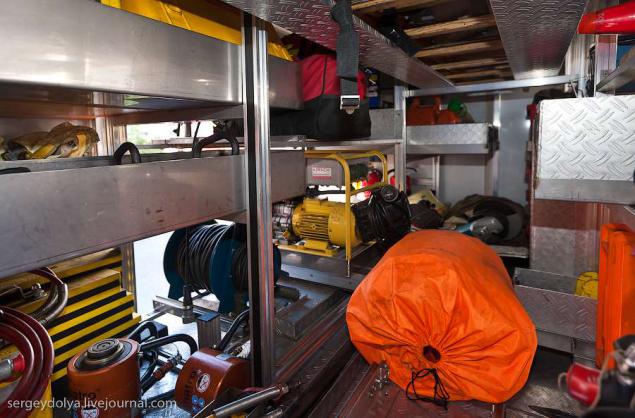
"Threaded end" - a glowing wire, helping to move in heavy smoke.
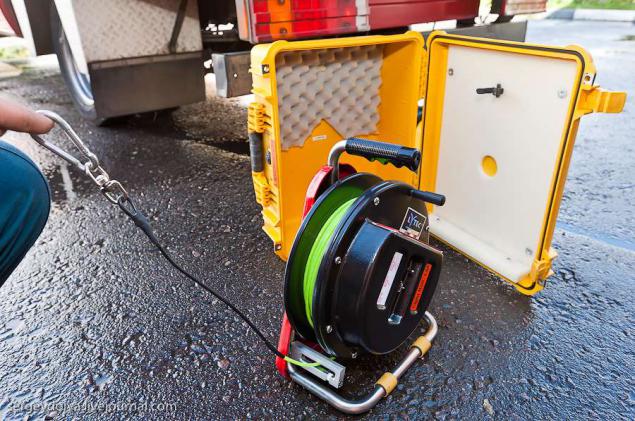
The shoe for fixing an emergency vehicle that is affectionately called the rescuers "Beeline»:
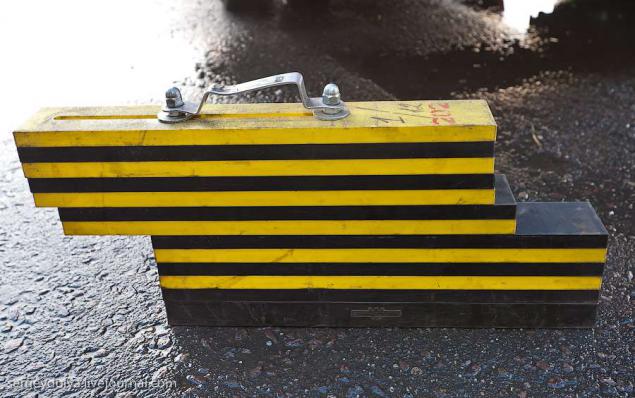
On the side of the machine travels along the rails generator supplying any power or portable lighting mast:
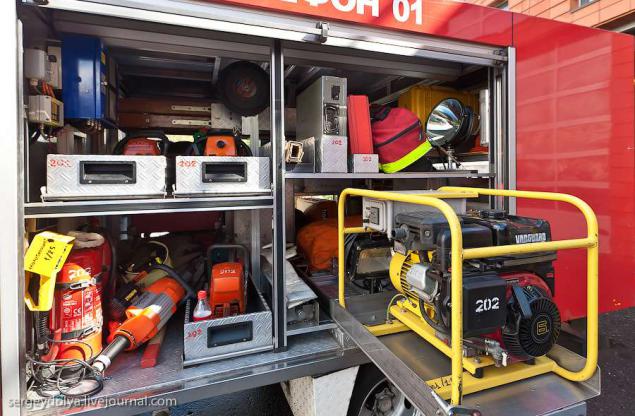
By the way, is often used for lighting and megafonar, whose light is visible even on a sunny day, and it works for five to seven hours:
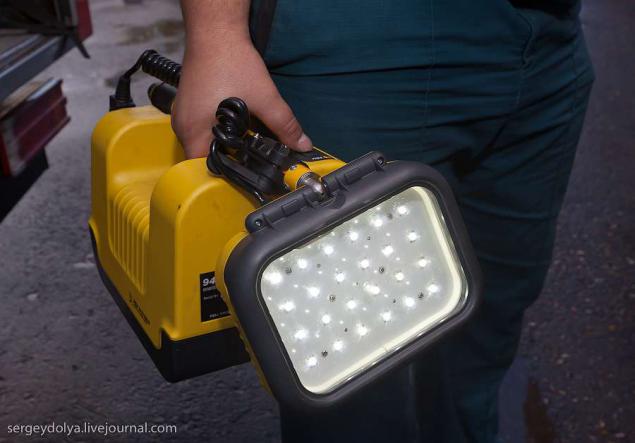
Set to break the windshield:
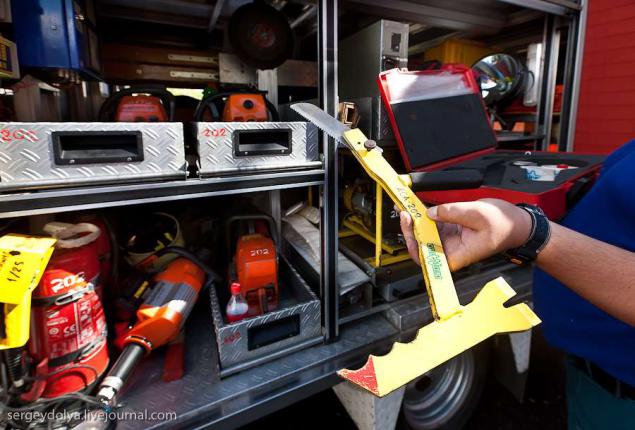
25
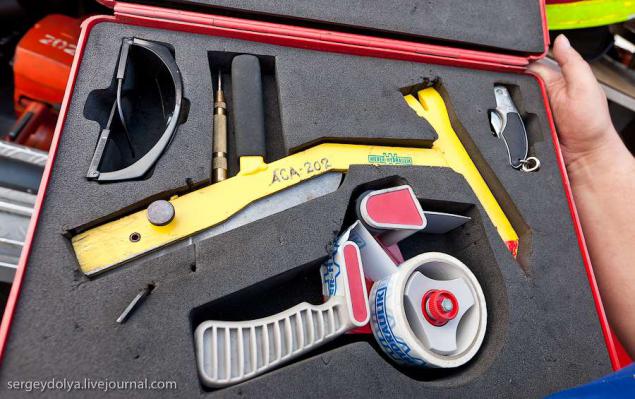
Electric universal scissors unclamping.
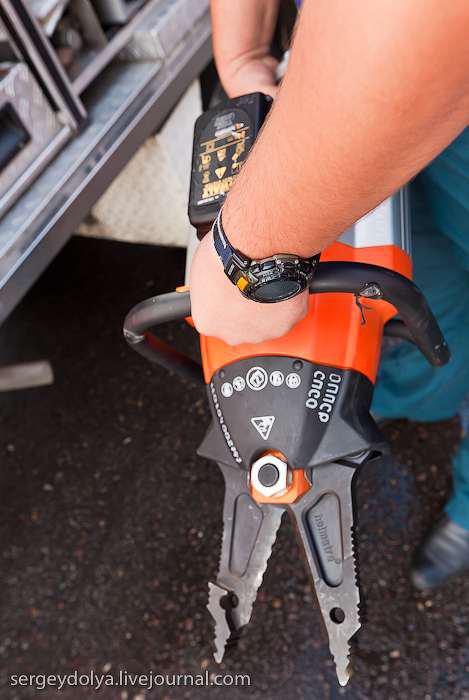
One of the main tools of the rescuer - Power cutters:
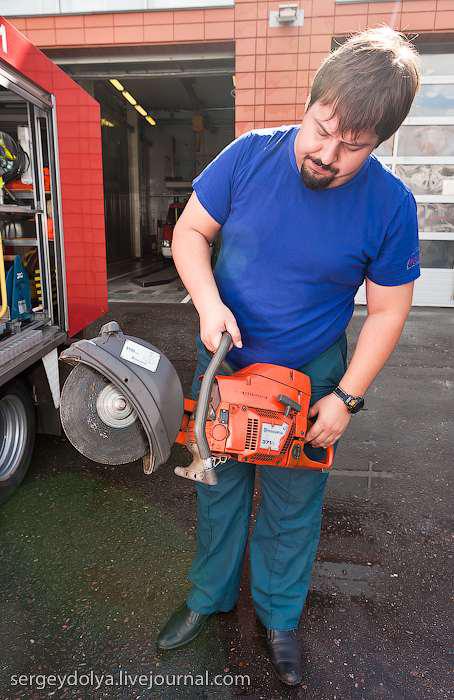
48
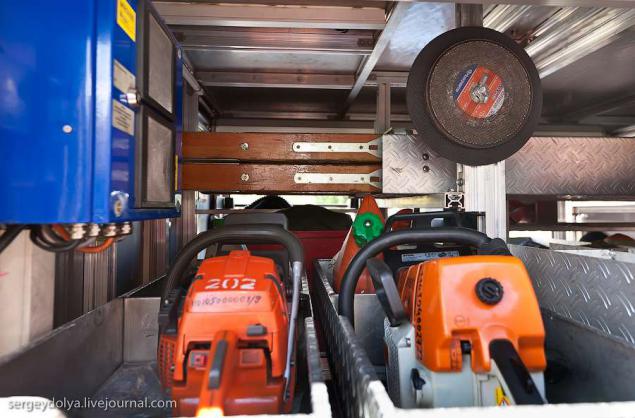
"Gidroklin" - set for the opening of doors.

Linemet shoots the rope at a distance of 150 meters. Used for saving drowning:
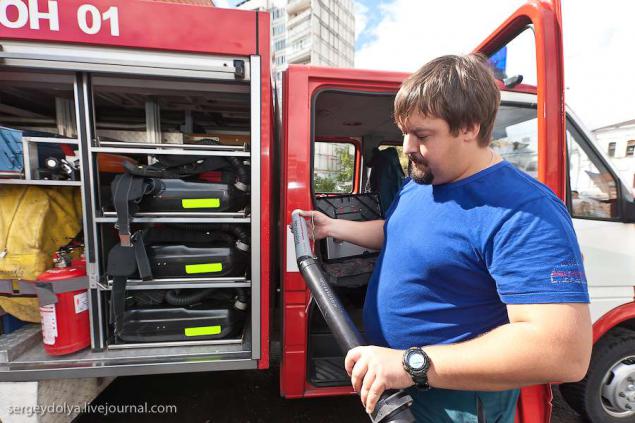
Thermal lets you find people and foci of fire in a smoky environment strongly
P.S. Many people incorrectly called firefighters firefighters. Firefighters - a fire victims, that is, people who have something burned, and firefighters - rescuers is to extinguish the fire. Do not be confused!
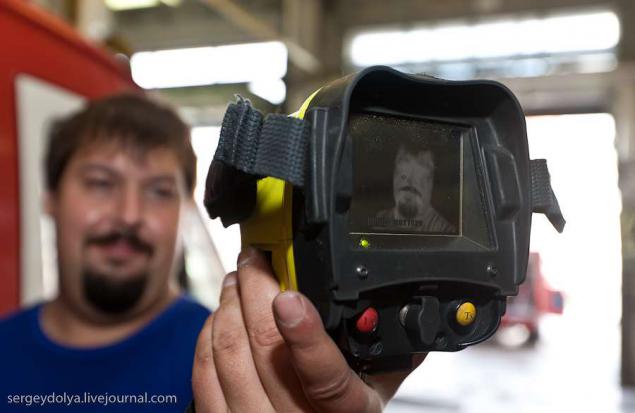
Source:
After visiting the American firehouse I became very interested, and how things are with us. I received an invitation from Ilya Boyko visit one of the fire-rescue teams (JI), the Moscow Fire and Rescue Center (GU "PCC") - PSO-202. What can I say ... I was impressed to see I am not what I expected: building brand new, first-class equipment, including thermal imagers, even, sociable, cheerful fire. And when I asked one of them about the salary, he said: "We have a normal salary. More than the average for Russia. " Rarely is meet ...
51 photos

To begin with, the whole building looks like a botanical garden. The detachment was lucky with the commandant. Thanks to the staircase and the rooms are literally surrounded by greenery:

Most of the day, if there is no call, firefighters carried out in the classroom or in the gym:

04

Learn the 19 items. From 4 to 6 pm rent regulations. Several times a year pass tests in all disciplines:

One of the standards - is to climb to the fourth floor of the training fire tower (the height of a 4-storey building) with the hook ladder. Standard (it's C grade!) 26 seconds, and best time to take - note - 10 seconds!

In the basement, in a separate room, there is a gym and a rocking chair:

One day, on average, firefighters go 3-5 times, as recorded in the journal:

As part of the Burning Bush is hanging icon - patron of firefighters:

Prepare yourself for yourself in the kitchen:

11

After dinner, if you have some spare time, you can porelaksirovat front of the TV:

They sleep all the conditioned space. This is especially true was during peat fires and smog. Duty hours in 4 days:

As part of a special drying cabinet, which completely dries boevka (jacket fire) for 15 minutes!

During the Moscow smog wrote about fire hoses and about what types they are. Types much, but there are two common diameter - "A" - 77 mm. and "B" - 51 mm. To distinguish the type A of type B was quite simple: A hole sleeve breaks 3 fingers, and arm B of 2:

Despite the fact that the watch tower had long been used by firefighters to oversee the city, it is still being built in every fire department - it dried fire hoses. They hang on the bars and lift up using a special mechanism:

This office operational duty around the fire rescue center. They supervise the work of teams and go on all the big scene, if necessary, to guide the work of their departments:

On the board in the operational duty machines marked all fire and rescue team, and he sees where they are at any given time:

In general, in Moscow, more than a hundred fire departments. All of them are marked on this map:

Call the fire takes the NCC - the Force Control Center, and then forwards it to the nearest fire station, where it takes the controller:

21

During a call, for all speed down from the second floor of the special poles. As explained to me, the main thing - do not cross your legs, and then you can easily break them:

23

Wear protective clothing, and already at the bottom very quickly. Boots are ready with his pants down:

A boevka put over his head
Already on the run or in the car wearing a helmet and a belt with an ax. Incidentally, the average time rescuers Directions in Moscow - 7, 5 minutes:

Rescuers are two types of breathing apparatus - "vents" and "kislorodniki." First Drager PSS-90 - open circuit devices. Air for breathing is taken from the cylinder. Such a device is lightweight, but is designed for a short time (about an hour):

The air supply is controlled by a computer:

Exhaled air into the center hole, and he served on the perimeter at a slight pressure, blowing glass mask and preventing it from fogged:

"Kislorodnik» Drager BG-4 - the device closed loop. It exhaled air passes through a special filter, then a little saturated with pure oxygen from a small bottle and returns to you. BG-4 allows you to breathe normally for up to 4 hours:

The air here is not served by the glass, and the mask may steam up. To combat this, there is an indoor janitor with a manual drive:

The equipment of each lifeguard PSO-202 Portable Kit includes necessarily self-rescue rescuers, popularly referred to as "samosёb." It is a subtle but strong 20-meter rope on which the rescuer can descend from the window, if the flame cut its output by:

At my request, emergency vehicle (ASA) was kicked out and told what he is equipped with:

To the right are three sets of the respiratory system PSS BG 4 (each rescuer - a machine), in the blue box is a tool for opening the entrance door, in the orange box - control panels high pressure pneumatic jacks. The yellow cover - low pressure pneumatic cushions. Next to them in depth - a suitcase with an electric punch.

The metal box is based on different ropes, and a little higher - traffic cones:

Easy breathing apparatus PSS-90 mounted on the rear rail to travel:

Nearby, on the same rails, leaves the unit with a hydraulic tool:

37

38

The orange bag is suit for the rescue of victims in cold water. Something like a wetsuit, but insulated:

"Threaded end" - a glowing wire, helping to move in heavy smoke.

The shoe for fixing an emergency vehicle that is affectionately called the rescuers "Beeline»:

On the side of the machine travels along the rails generator supplying any power or portable lighting mast:

By the way, is often used for lighting and megafonar, whose light is visible even on a sunny day, and it works for five to seven hours:

Set to break the windshield:

25

Electric universal scissors unclamping.

One of the main tools of the rescuer - Power cutters:

48

"Gidroklin" - set for the opening of doors.

Linemet shoots the rope at a distance of 150 meters. Used for saving drowning:

Thermal lets you find people and foci of fire in a smoky environment strongly
P.S. Many people incorrectly called firefighters firefighters. Firefighters - a fire victims, that is, people who have something burned, and firefighters - rescuers is to extinguish the fire. Do not be confused!

Source:
